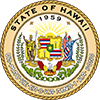Hawai‘i

Hawai‘i’s Renewable Portfolio Standard (RPS) is intended to increase use of renewable resources in the state by establishing the minimum amount of renewable energy that the state's electricity providers must sell in a given year. This legally-established renewable energy procurement goal gradually increases over time to meet the overall target of 40% renewable power by 2030. The state also established separate Energy Efficiency Portfolio Standards (EEPS) requiring 4,300 GWh reduction by 2030, but these are not considered for calculations on this and subsequent pages.
The state profile below explores the design of this policy, highlighting the factors that influence the success of Hawai‘i’s RPS goals and the tradeoffs inherent to it. Once you’re comfortable with the information on this page, you can evaluate the policy’s expected viability with the RPS Feasibility Calculator. You can also use the calculator to change the policy requirements, trajectory, cost cap, and more, to see how altering Hawai‘i’s policy design affects its success.
RPS Snapshot
Overview
- 40% of the state’s retail electric sales from must be from renewable sources by 2030
- No carve-outs
- No legally defined cost cap
Carve-outs
Carve-outs can create economic opportunities in the state by introducing new or promising technologies into the market. However, these standards limit the utilities’ ability to substitute between renewable energy sources, potentially increasing the cost of the policy. Hawai‘i does not require any technology carve-outs.
RPS Progress
Compare the goal established in the RPS to what is being achieved.
Energy Details
Grid Mix
The following chart compares the variety of sources currently used to generate Hawaii’s electricity. The color of each bar is indicative of the carbon intensity of each source.
Cost Cap Details
Unlike some states, Hawai‘i does not have an explicit ‘cost cap’ or limit on the potential increase in electricity costs as a result of this policy. However, the Public Utilities Commission (PUC) may waive compliance with the RPS program for good cause. A 2009 amendment states that starting in 2013, the RPS is to be evaluated every 5 years for achievability. The PUC may revise standards based on best information available at the time. This process also applies to the EEPS. Using the RPS Feasibility Calculator you can act as the PUC and define an explicit cost cap, determining what level of costs will lead to a viable RPS.
Historic retail prices (¢ / kWh)
The above chart presents historical data from the Energy Information Administration (EIA) on the price at which residential customers can purchase electricity. Typically, states set explicit cost caps relative to the retail price (as opposed to the lower wholesale price).
Legislation
Statute
Hawai‘i is the only state to create a complementary ‘energy efficiency RPS’ called the Energy Efficiency Portfolio Standards (EEPS), calling for a 30% decrease in energy consumption (or 4,300 GWh) in addition to the RPS. The general RPS statute calls for 40% of electricity from renewable energy by 2030, the highest RPS goal in the country. The Public Utilities Commission (PUC) can designate specific portions of the goal to each utility, and sometimes may specify a renewable technology to meet the goal. Until 2015, energy efficiency measures will count toward the total RPS requirements; after 2015, 100% of the requirements must be met through renewable electricity.
RPS Technical Details
| Policy | Description |
|---|---|
| Eligible Technologies | Wind, solar, falling water, biogas (incl. landfill and sewage-based digester gas), geothermal, tidal and ocean thermal energy conversion, biomass (incl. biomass crops, agricultural and animal residues/wastes, and municipal solid waste and other solid waste), biofuels, hydrogen produced from renewable sources |
| Geographic Eligibility | Only In-State renewable energy can be used |
| Percent of Total Load | 100% |
| Technology Requirements | None |
| Sectors | Investor-Owned Utility, Rural Electric Cooperative |
| Penalty | By statute, state regulators may impose unspecified penalties for non-compliance. |
Resources
Tools and other links
- Database of State Incentives for Renewables & Efficiency (DSIRE) RPS data page—Datasets available for download in .xlsx format
- National Renewable Energy Laboratory (NREL) Energy Analysis Portal—Resources on renewable energy policies, and interactive web tools
- Energy Information Administration (EIA) U.S. Energy Mapping System—An interactive energy resource map with a myriad of data layers to explore
References
- DSIRE State RPS Page—Visit for detailed information on RPS and complete legislation
- U.S. Department of Energy Office of Energy Efficiency and Renewable Energy (EERE)—State Profile—Access your state’s EERE page, and find information on renewable resources maps, energy statistics, and news